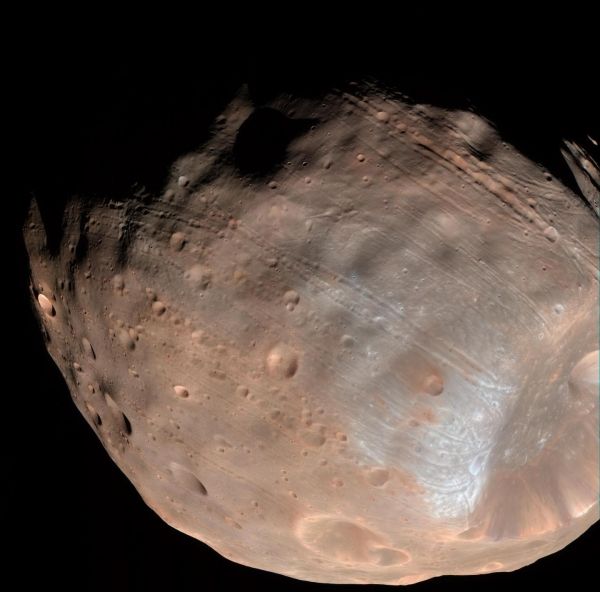A new study bolsters the idea that strange grooves crisscrossing the surface of the Martian moon Phobos were made by rolling boulders blasted free from an ancient asteroid impact.
The research, published in Planetary and Space Science, uses computer models to simulate the movement of debris from Stickney crater, a huge gash on one end of Phobos’ oblong body. The models show that boulders rolling across the surface in the aftermath of the Stickney impact could have created the puzzling patterns of grooves seen on Phobos today.
“These grooves are a distinctive feature of Phobos, and how they formed has been debated by planetary scientists for 40 years,” said Ken Ramsley, a planetary science researcher at Brown University who led the work. “We think this study is another step toward zeroing in on an explanation.”
Phobos’ grooves, which are visible across most of the moon’s surface, were first glimpsed in the 1970s by NASA’s Mariner and Viking missions. Over the years, there has been no shortage of explanations put forward for how they formed. Some scientists have posited that large impacts on Mars have showered the nearby moon with groove-carving debris. Others think that Mars’ gravity is slowly tearing Phobos apart, and the grooves are signs of structural failure.
Read more at Brown University
Image: Much of Phobos' surface is covered with strange linear grooves. New research bolsters that idea the boulders blasted free from Stickney crater (the large depression on the right) carved those iconic grooves. (Credit: NASA/JPL-Caltech/University of Arizona)


